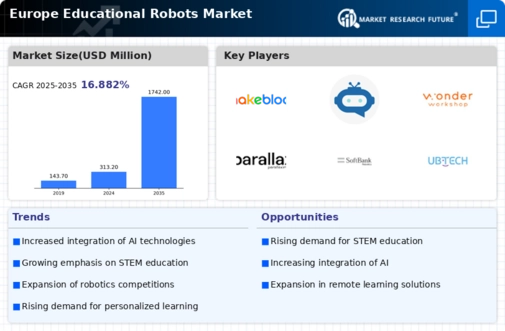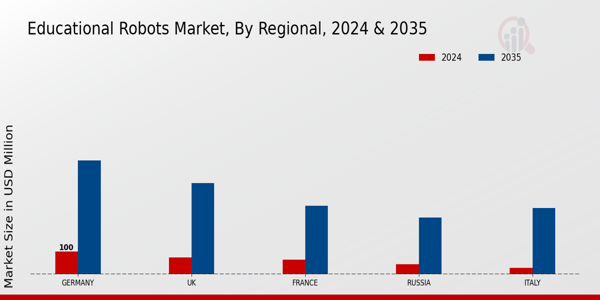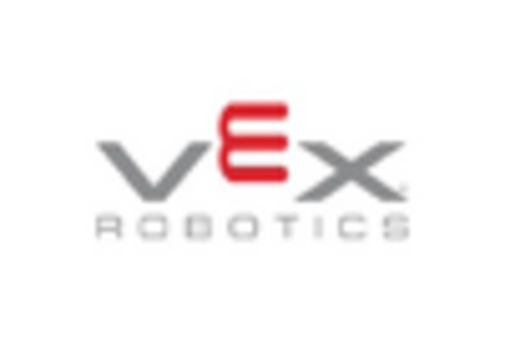The Europe Educational Robots Market is characterized by a dynamic and competitive landscape that is witnessing significant growth driven by increasing demand for innovative learning solutions. The integration of technology into educational curricula has prompted educators and institutions to seek robotic solutions that enhance student engagement and promote critical thinking skills. Companies in this market are focused on developing advanced robotics that cater to various educational levels, offering interactive and hands-on experiences that prepare students for a technology-driven future.
The competition among key players revolves around product innovation, strategic partnerships, and the ability to meet the evolving needs of educators and learners. As the market continues to expand, businesses that leverage their capabilities to offer unique educational advantages will likely maintain a competitive edge in this rapidly evolving sector.
Makeblock has established a notable presence in the Europe Educational Robots Market, leveraging its strengths in delivering user-friendly robotics education tools. The company offers a variety of products designed to be accessible for both educators and students, combining hardware and software solutions that enhance the learning process. Makeblock's emphasis on STEM education aligns well with current educational trends in Europe, positioning it as a forward-thinking leader in the market. The ease of integration of Makeblock's products within existing curricula adds to their value proposition, making them appealing to schools and educational organizations across the continent.
Furthermore, the company’s continued commitment to innovation ensures that it remains at the forefront of educational robotics, enabling it to adapt to the diverse needs of the European educational landscape.
Ozobot operates within the Europe Educational Robots Market by providing engaging and interactive robotic solutions designed to teach coding and critical thinking skills. The company focuses on products that cater to young learners, with key offerings that include small programmable robots that can be used in a variety of educational settings. Ozobot's strengths lie in its unique approach to learning, where students can use visual programming languages alongside physical robots to stimulate creativity and problem-solving skills. The company's market presence in Europe is marked by strategic partnerships with schools and educational initiatives aimed at integrating robotics into the classroom.
Ozobot's initiatives to collaborate with educational institutions have enhanced its visibility and appeal, strengthening its position in the market. The company regularly updates its product line to include new features that address the needs of educators, ensuring it remains relevant in the competitive landscape of educational robotics in Europe.





















Leave a Comment